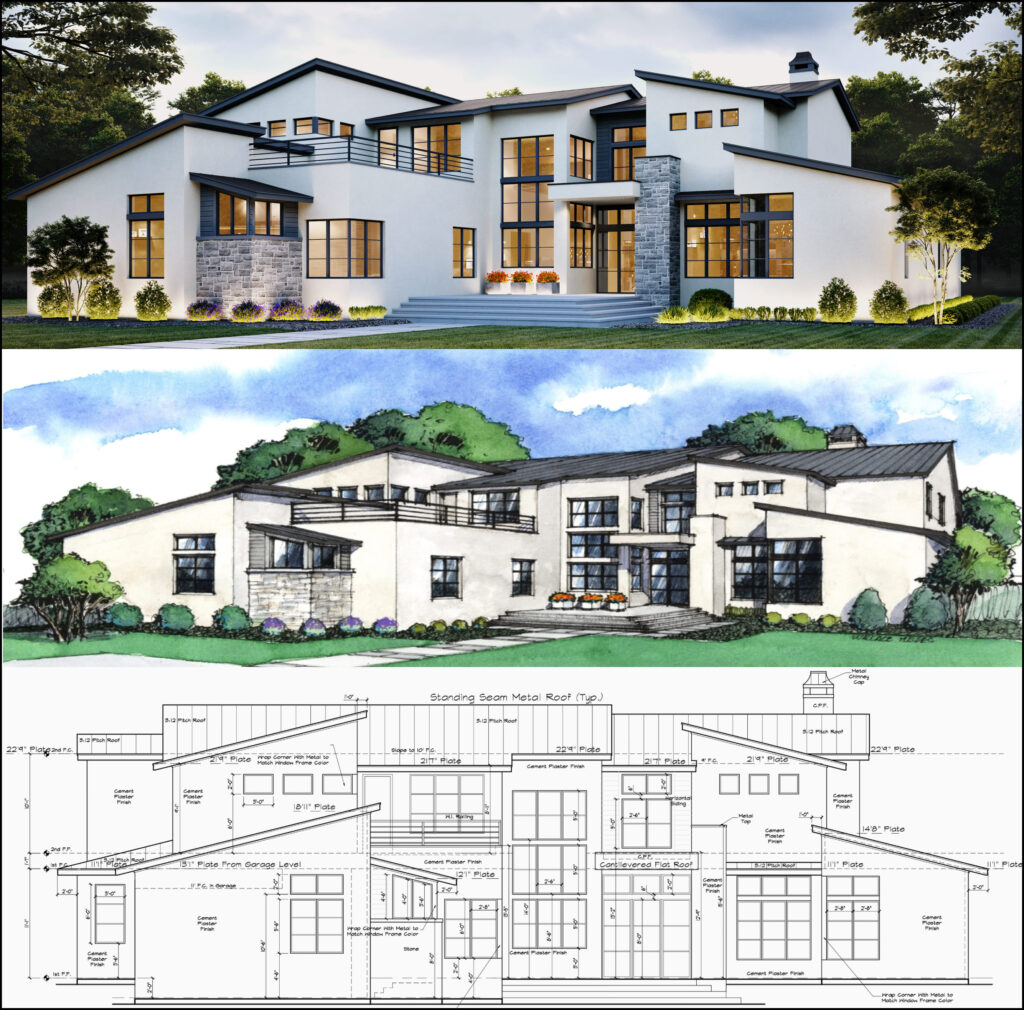Why CDA Architects Are Leaders in Architectural Style and Development
Why CDA Architects Are Leaders in Architectural Style and Development
Blog Article
An Extensive Introduction of Architectural Styles and Their Impact on Modern City Planning and Development
Architectural styles have long served as a mirror to the societal values and technical improvements of their time, playing a critical duty in shaping modern-day city planning and development. From the splendour of Neoclassicism to the practical technique of Brutalism, each style has actually introduced unique principles that affect metropolitan appearances and performance.
Historic Introduction of Building Designs

As societies transitioned through the Center Ages, Gothic architecture emerged, characterized by its verticality and elaborate describing, mirroring the spiritual goals of the age. The Renaissance marked a rebirth of timeless perfects, merging art and architecture in cutting-edge manner ins which influenced succeeding designs throughout Europe.

Today, building designs remain to progress, driven by globalization and sustainability problems, reflecting a dynamic interplay between heritage and advancement. This historic summary highlights the value of style as a mirror of societal development and as a driver for urban advancement.
Trick Architectural Styles Explained
The diversity of architectural designs shows the myriad impacts that shape our constructed environment, each embodying distinct attributes and cultural values. Key building designs consist of Classic, Gothic, Baroque, Innovation, and Postmodernism, each standing for one-of-a-kind historic contexts and visual philosophies.
Classical style, rooted in old Greece and Rome, emphasizes proportion, proportion, and the use of columns (cda architects). In comparison, Gothic design, thriving in the Center Ages, is identified by sharp arches, ribbed vaults, and flying buttresses, developing an ethereal top quality in basilicas. Baroque style, emerging in the 17th century, is noted by grandeur, fancy decoration, and a dynamic interplay of light and darkness
Modernism, which got energy in the early 20th century, focuses on feature over type, utilizing new products like steel and glass to create minimalist frameworks. Postmodernism, responding versus the austerity of Innovation, accepts eclecticism and historical referral, often incorporating playful elements and irony.

Effect On Urban Planning
In forming the advancement of cities, building designs significantly affect urban preparation choices. The option of building design usually dictates the looks, capability, and total personality of metropolitan settings. Modernism, with its navigate to this site emphasis on minimalism and functionality, encourages open spaces and the integration of technology, forming city designs that focus on performance and access. Conversely, traditional designs might highlight historical conservation, bring about city layouts that preserve cultural heritage and advertise pedestrian-friendly settings.
Furthermore, building styles can affect zoning regulations and land use policies. Urban planners have to think about the dominating building fads when making areas, making certain that new developments integrate with existing structures. This factor to consider promotes cohesive urban landscapes and boosts neighborhood identity.
The implementation of details architectural styles can likewise influence socioeconomic elements within a city. High-end modern styles might bring in upscale residents and companies, leading to gentrification, while more cost effective housing services could focus on useful and lasting layouts to accommodate diverse populaces. cda architects. Eventually, the interaction in between architectural designs and urban preparation creates dynamic cities that show both historical context and modern demands, forming the lived experiences of their residents
Sustainability and Modern Design
Building designs play a crucial function in attending to contemporary obstacles, specifically in the realm of redirected here sustainability. As urban locations expand and ecological issues magnify, modern-day style progressively accepts sustainable layout principles that prioritize energy efficiency, resource preservation, and marginal environmental effect.
Contemporary building movements, such as biophilic style and green style, advocate for frameworks that integrate with their surroundings, using all-natural materials and advertising biodiversity. These styles often integrate renewable power sources, such as photovoltaic panels and wind turbines, to decrease reliance on fossil gas and reduced carbon impacts.
Moreover, the combination of innovative technologies, such as wise structure systems, enhances energy management, maximizing source usage while guaranteeing owner comfort. Innovative water administration approaches, including rain harvesting and greywater recycling, further contribute to lasting urban environments.
Especially, sustainability prolongs beyond environmental worries; it includes social and economic dimensions also. By cultivating neighborhood wellness and advertising inclusivity, modern-day architectural styles align with lasting growth objectives. Consequently, the development of architectural practices continues to shape durable cities that not only satisfy the demands of today yet likewise guard the future for generations ahead.
Area Engagement in Style
Area engagement in style serves as a vital bridge between designers and the populaces they serve, making certain that the built setting reflects the needs and goals of its individuals. This collaborative procedure welcomes community members to add their insights and choices, promoting a feeling of ownership and obligation towards the areas they live in.
Effective community involvement uses numerous methods, such as workshops, surveys, and public discussion forums, to gather diverse perspectives. These methods promote a two-way discussion, allowing engineers to comprehend neighborhood contexts while encouraging residents to voice their concerns and wishes. This inclusivity not just improves the design high quality yet likewise promotes social equity by addressing the unique challenges faced by marginalized teams.
Furthermore, community interaction can result in innovative services that could not arise in a typical layout procedure. By integrating regional knowledge and social values, designers can develop areas that resonate even more deeply with customers, boosting functionality and sustainability. Eventually, focusing on neighborhood engagement in layout procedures leads to settings that nurture social communications, support wellness, and strengthen neighborhood connections, thus playing a critical function fit modern city landscapes.
Verdict
Building designs have exceptionally affected modern city preparation and growth, reflecting advancing social and technical contexts. As cities recommended you read proceed to grow and adapt, the recurring discussion between building heritage and modern style principles will remain important in creating comprehensive, vibrant spaces that improve quality of life and advertise social equity.
Report this page